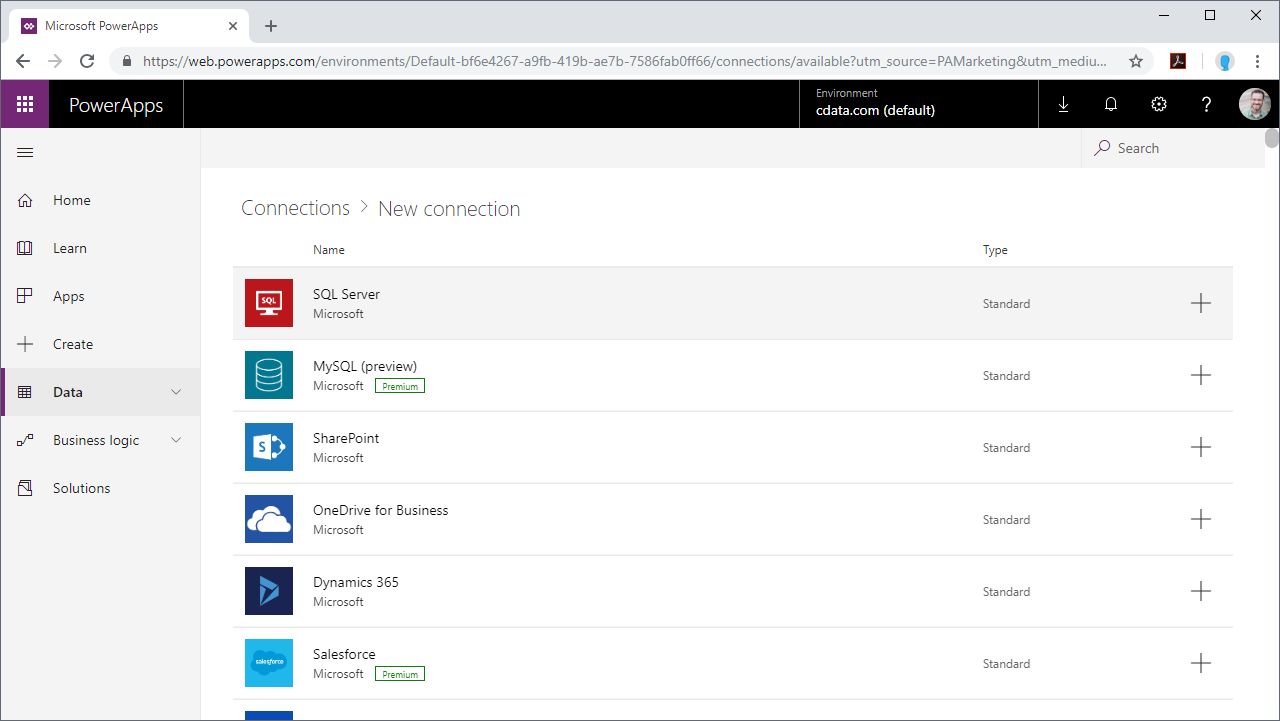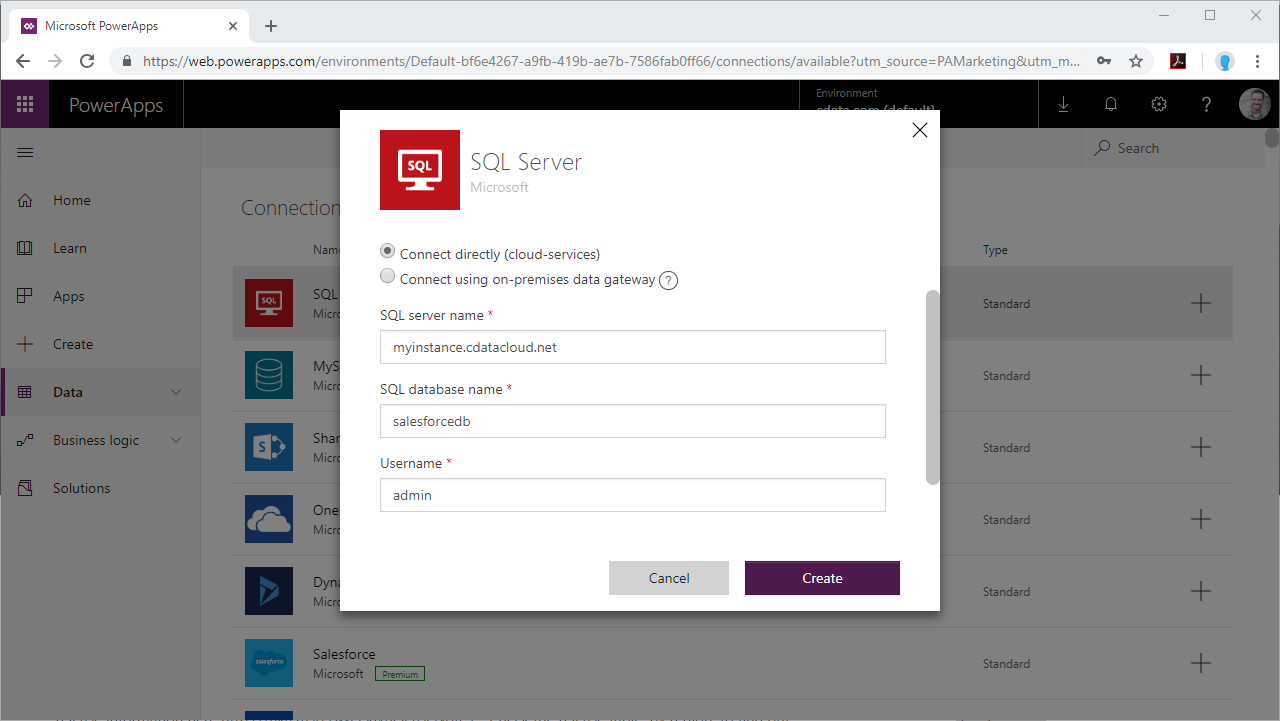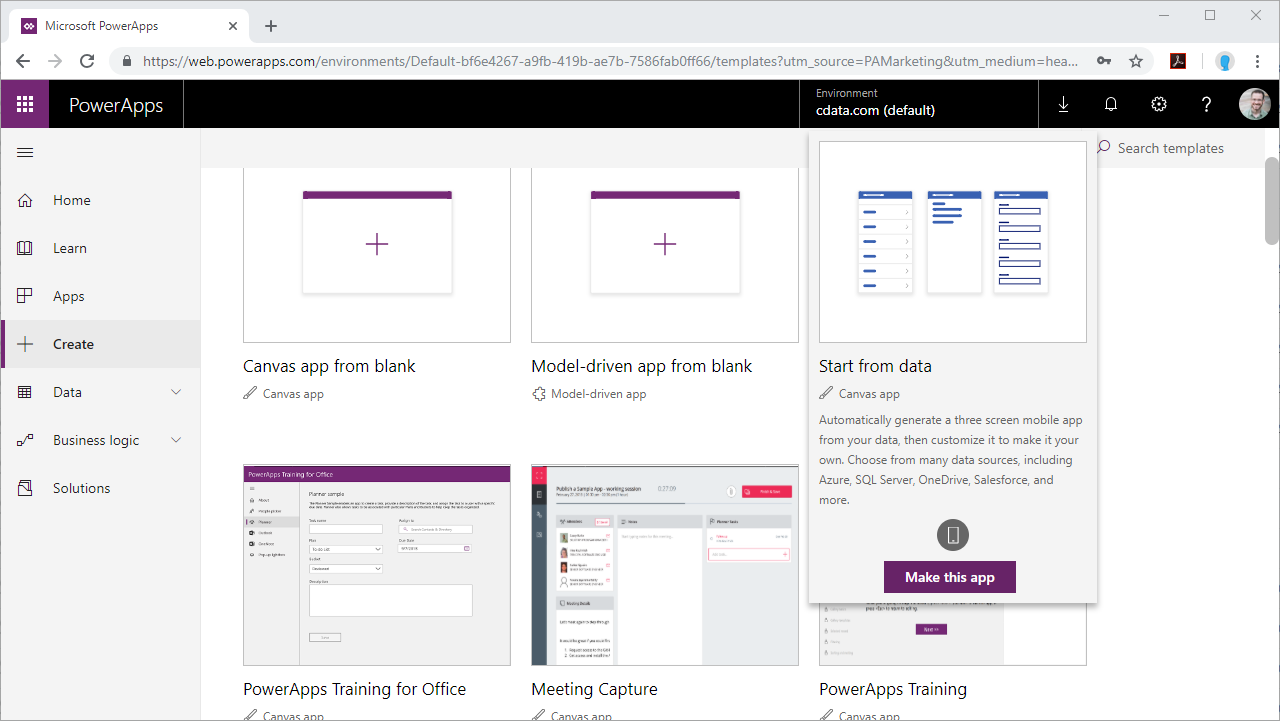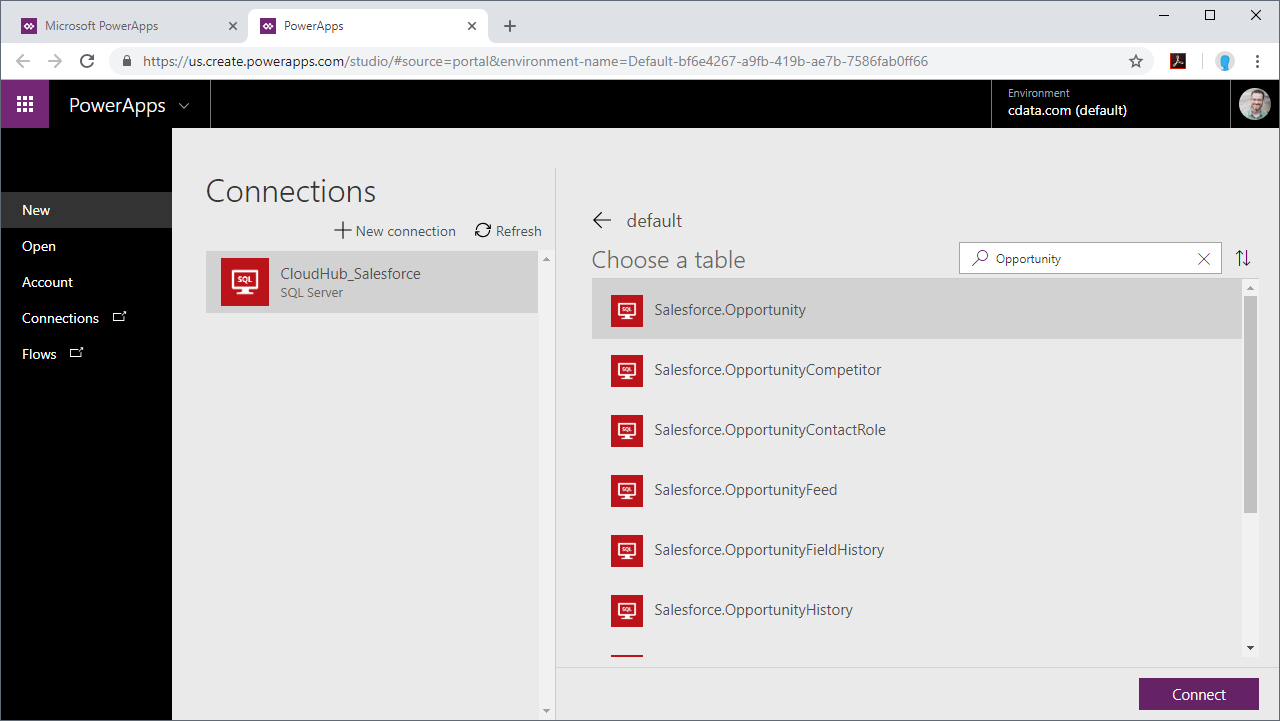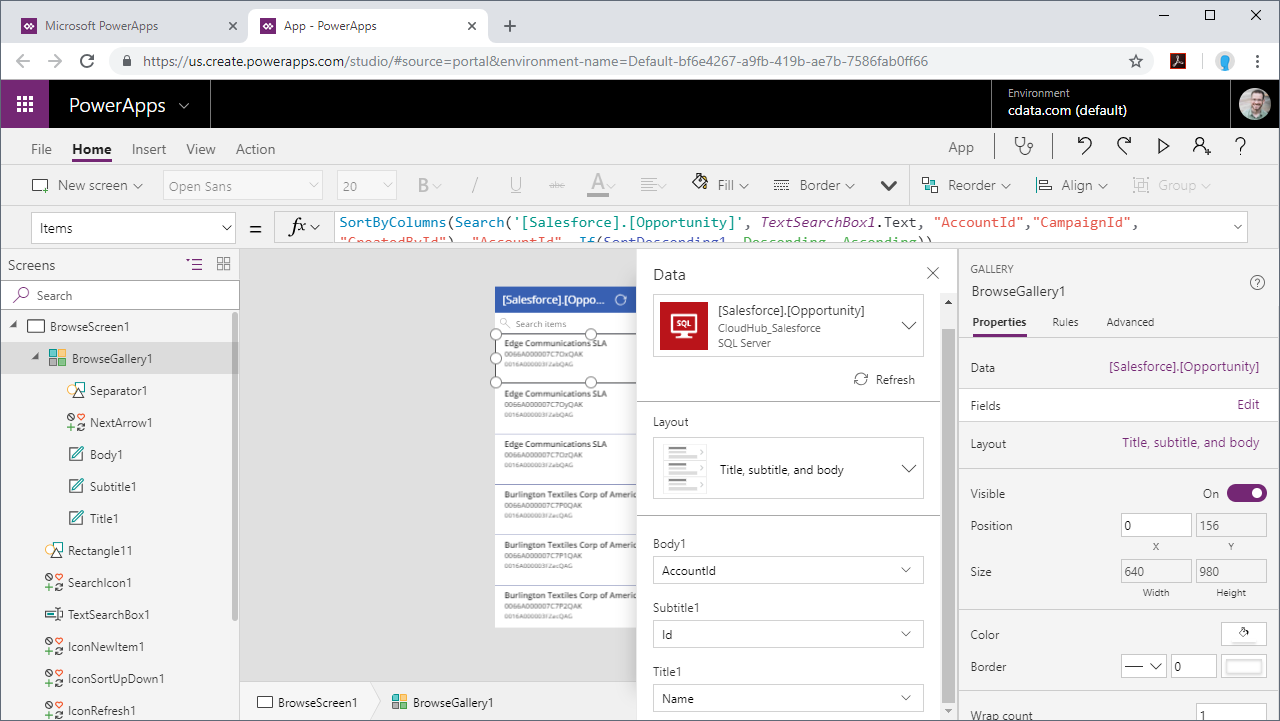Discover how a bimodal integration strategy can address the major data management challenges facing your organization today.
Get the Report →Integrate Live EnterpriseDB Data into Custom Business Apps Built in Power Apps
Use CData Connect Server to create a virtual SQL Server Database for EnterpriseDB data and integrate live EnterpriseDB data into apps built in Microsoft Power Apps.
Power Apps is a service for building and using custom business apps that connect to your data and work across the web and mobile — without the time and expense of custom software development. When paired with CData Connect Server, you get instant access to EnterpriseDB data from the apps you build using Power Apps. This article shows how to connect to Connect Server from Power Apps and build an app based on live EnterpriseDB data.
CData Connect Server provides a pure SQL interface for EnterpriseDB, allowing you to easily integrate with live EnterpriseDB data in Power Apps — without replicating the data. CData Connect Server looks exactly like a SQL Server database to Power Apps and uses optimized data processing out of the box to push all supported SQL operations (filters, JOINs, etc) directly to EnterpriseDB, leveraging server-side processing to quickly return EnterpriseDB data.
Create a Virtual SQL Database for EnterpriseDB Data
CData Connect Server uses a straightforward, point-and-click interface to connect to data sources and generate APIs.
- Login to Connect Server and click Connections.
![Adding a connection]()
- Select "EnterpriseDB" from Available Data Sources.
-
Enter the necessary authentication properties to connect to EnterpriseDB.
The following connection properties are required in order to connect to data.
- Server: The host name or IP of the server hosting the EnterpriseDB database.
- Port: The port of the server hosting the EnterpriseDB database.
You can also optionally set the following:
- Database: The default database to connect to when connecting to the EnterpriseDB Server. If this is not set, the user's default database will be used.
Connect Using Standard Authentication
To authenticate using standard authentication, set the following:
- User: The user which will be used to authenticate with the EnterpriseDB server.
- Password: The password which will be used to authenticate with the EnterpriseDB server.
Connect Using SSL Authentication
You can leverage SSL authentication to connect to EnterpriseDB data via a secure session. Configure the following connection properties to connect to data:
- SSLClientCert: Set this to the name of the certificate store for the client certificate. Used in the case of 2-way SSL, where truststore and keystore are kept on both the client and server machines.
- SSLClientCertPassword: If a client certificate store is password-protected, set this value to the store's password.
- SSLClientCertSubject: The subject of the TLS/SSL client certificate. Used to locate the certificate in the store.
- SSLClientCertType: The certificate type of the client store.
- SSLServerCert: The certificate to be accepted from the server.
![Configuring a connection (SQL Server is shown).]()
- Click Save Changes
- Click Privileges -> Add and add the new user (or an existing user) with the appropriate permissions.
Connecting to CData Connect Server
To use Connect Server to integrate EnterpriseDB data into your Power Apps, you need a new SQL Server connection:
- Log in to Power Apps
- Click Data -> Connections -> New connection
- Select SQL Server
![Creating a new SQL Server Connection]()
- In the connection wizard:
- Choose to connect directly
- Set SQL server name to the address of your Connect Server instance (CONNECT_SERVER_URL)
- Set SQL database name to the name of the virtual EnterpriseDB database you created earlier (like enterprisedbdb)
- Set the Username and Password and click Create
![Connecting to Connect Server]()
Building a Data-Centric App for EnterpriseDB Data
With the connection to Connect Server configured, you are ready to integrate live EnterpriseDB data into the apps you build in Power Apps.
- Log in to Power Apps
- Click Create, hover over "Start from data" and click Make this app
![Creating a new app from data]()
- Select the SQL Server connection you created
- Search for or choose a table to work with
- Click Connect
![Connecting to EnterpriseDB data]()
- Customize the newly created app just like you would any other, including changing the layout and setting the fields exposed in BrowseScreen, DetailScreen, and EditScreen
![Customizing the EnterpriseDB data app]()
At this point, you have an app with read and write access to live EnterpriseDB data that you can save and publish for use within your organization.
SQL Access to EnterpriseDB Data from Applications
Now you have a direct connection to live EnterpriseDB data from Microsoft Power Apps. You can create more connections and apps to drive business — all without replicating EnterpriseDB data.
To get SQL data access to 200+ SaaS, Big Data, and NoSQL sources directly from your applications, see the CData Connect Server.








